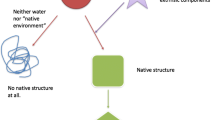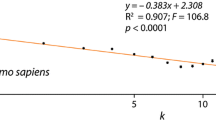Abstract
The present paper attempts to demonstrate semiotic arguments against the sequence → structure → function paradigm in protein studies. The unidirectional deterministic thinking in biological processes has been challenged by several disciplines of life sciences (epigenetics, proteomics, etc.) and philosophy (process philosophy). Biosemiotics comprehends living organisms as actively participating in their present and somehow creating or shaping their future, having a plurality of options for acting. Determinism and unidirectionality are in contradiction with a biosemiotic approach towards life, mostly when considering Peirce’s triadic concept of semiosis. In this paper, a Peircean biosemiotic approach is applied to proteins and to the process of protein folding. Two main concepts are presented to support the arguments against the SSF paradigm in protein studies: the NonReduction Theorem and the notion of folded continuum. A processual approach is proposed as the most suitable for descriptions of proteins and their functions.



Similar content being viewed by others
Notes
For more information see (Stein 2004) who described enzymes as a particular example of proteins from this dynamic perspecitve.
(In the original, “non è semplicemente un oggetto, bensì è un oggetto che significa qualcosa per un altro Oggetto”)
There is another possible understanding of referentiality in molecules. It might be argued that molecules represent the actual state of the environment. In this way the self-reference could be avoided at the level of molecules. Nevertheless, from a functional viewpoint, the “referents” of proteins are not states of the environment in general, but are states of environment with a direct relation to a proteinic function. Thus, although molecules in general can be comprehended as having a direct reference (state of environment), proteins and substrates in particular are rather self-referential signs.
The term “ostension” in a semiotic background has been a matter of inetrest to the Czech semiotic school, with mainly Ivo Osolsobě working on this notion. Osolsobě defines ostensive signs as things standing for themselves (Osolsobě 2002).
References
Burch, R. W. (1992). Valental aspects of Peircean algebraic logic. Computers and Mathematics with Applications, 23(6), 665–677.
Burch, R. W. (1997). Peirce’s reduction thesis. In N. Van Evra et al. (Eds.), Studies in the Logic of Charles Sanders Peirce (pp. 234–251). Indiana University Press.
Cimatti, F. (2000). Nel segno del cerchio. L'ontologia semiotica di Giorgio Prodi. Roma: Manifestolibri.
Das, R. K., Ruff, K., Pappu, M., & Rohit, V. (2015). Relating sequence encoded information to form and function of intrinsically disordered proteins. Current Opinion in Structural Biology, 32, 102–112. https://doi.org/10.1016/j.sbi.2015.03.008.
Dupré, J. (2010). How to be naturalistic without being simplistic in the study of human nature. In M. de Caro & D. Macarthur (Eds.), Naturalism and normativity (pp. 289–303). New York: Columbia University Press.
Dyson, H. J., & Wright, P. E. (2005). Intrinsically unstructured proteins and their functions. Nature Reviews. Molecular Cell Biology, 6, 197–208. https://doi.org/10.1038/nrm1589.
Guttinger, S. (2018). A process ontology for macromolecular biology. In D. J. Nicholson & J. Dupré (Eds.), Everything flows: Towards a processual philosophy of biology (pp. 303–321). Oxford: Oxford University Press.
Henderson, B., & Martin, A. (2011). Bacterial virulence in the moonlight: Multitasking bacterial moonlighting proteins are virulence determinants. Infectious Disease, 79(9), 3476–3491.
Hernández, S., Amela, I., Cedano, J., Piñol, J., Perez-Pons, J. A., Mozo-Villarias, A., & Querol, E. (2012). Do moonlighting proteins belong to the intrinsic disordered proteins class? Journal of Proteomics Bioinformatics, 5(11), 262–264.
Hoffmeyer, J. (2008). Semiotic scaffolding of living systems. In M. Barbieri (Ed.), Introduction to biosemiotics: The new biological synthesis (pp. 149–166). Dordrecht: Springer.
Huberts, D. H., & van der Klei, I. J. (2010). Moonlighting proteins: An intriguing mode of multitasking. Biochimica et Biophysica Acta (BBA) - Molecular Cell Research, 1803(4), 520–525.
Jeffery, C. (2005) Mass Spectrometry and the Search for Moonlighting Proteins. Mass Spec Rev 24, 772-82.
Jeffery, C. (2014). An introduction to protein moonlighting. Biochemical Society Transactions, 42(6), 1679–1683.
Kauffman, S. (2000). Investigations. New York: Oxford University Press.
Ketner, K. L., Bisanz, E., Cunningham, S. R., Hendrick, C., Johnson, L., McLaughlin, T., & O’Boyle, M. (2011). Peirce’s NonReduction and relational completeness claims in the context of first-order predicate logic. KODIKAS/CODE: Ars Semeiotica, 34(1–2), 3–14.
Kister, A. (2015) Amino acid distribution rules predict protein fold: protein grammar for beta-strand sandwich-like structures, Biomolecules, 5, 41-59.
Kull, K. (2015). Evolution, choice, and scaffolding: Semiosis is changing its own building. Biosemiotics, 8(2), 223–234.
Markoš, A., & Švorcová, J. (2018). Epigenetic processes and evolution of life. Boca Raton: CRC Press.
Osolsobě, I. (2002). Ostenze, hra, jazyk. Sémiotické studie. Brno: Host.
Paolucci, C. (2004). Piegature della continuità. Semiotica interpretativa e semiotica generativa, Versus. Quaderni di studi semiotici (Vol. 97, pp. 111–150). Bologna: Il Mulino.
Peirce, C. S., & Welby, V. (1977). In C. S. Hardwick (Ed.), Semiotic and Significs: The Correspondence between Charles S. Peirce and Victoria Lady Welby. Bloomington: Indiana University Press.
Perutz, M. F. (1962). Relation between structure and sequence of haemoglobin. Nature, 194, 914–917.
Prodi, G. (1988). La cultura come ermeneutica naturale. Intersezioni, 8 (1), 23–48. Bologna: Il Mulino.
Sharov, A. A. (2010). Functional information: Towards synthesis of biosemiotics and cybernetics. Entropy, 12(5), 1050–1070. https://doi.org/10.3390/e12051050.
Sharov, A. A., & Vehkavaara, T. (2015). Protosemiosis: Agency with reduced representation capacity. Biosemiotics, 8(1), 103–123. https://doi.org/10.1007/s12304-014-9219-7.
Stein, R. L. (2004). Towards a process philosophy of chemistry. HYLE International Journal for Philosophy of Chemistry, 10(1), 5–22.
Wright, P. E., & Dyson, H. J. (1999). Intrinsically unstructured proteins: Re-assessing the protein structure-function paradigm. Journal of Molecular Biology, 293(2), 321–331. https://doi.org/10.1006/jmbi.1999.3110.
Acknowledgements
This paper was supported by an internal research grant of Faculty of Arts, Palacký University in Olomouc (2019-2021), project number FPVC2019/03. I declare no conflict of interest.
Author information
Authors and Affiliations
Corresponding author
Additional information
Publisher’s Note
Springer Nature remains neutral with regard to jurisdictional claims in published maps and institutional affiliations.
Rights and permissions
About this article
Cite this article
Lacková, Ľ. Towards a Processual Approach in Protein Studies. Biosemiotics 12, 469–480 (2019). https://doi.org/10.1007/s12304-019-09370-y
Received:
Accepted:
Published:
Issue Date:
DOI: https://doi.org/10.1007/s12304-019-09370-y




